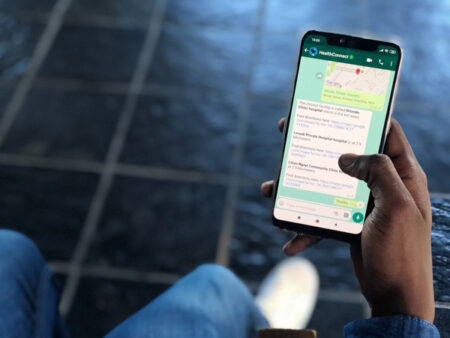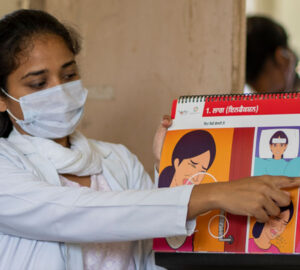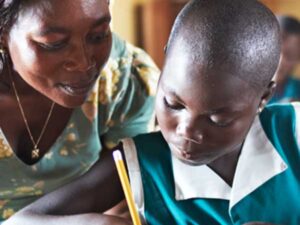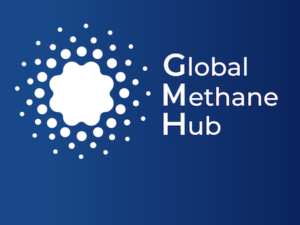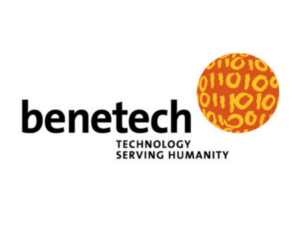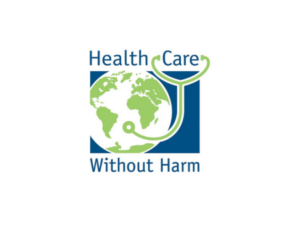Reach Digital Health is building a world where everyone has access to health services and products. They are using technology to scale access to quality healthcare information.
Carlos Yerena of Reach Digital Health (formerly Praekelt.org) spoke with Jessica Kantor on April 12, 2023. Click here to read the full conversation with insights highlighted.
Jessica Kantor: Can you please introduce yourself, the organization that you work for, and the problem that your work addresses?
Carlos Yerena: My name is Carlos Yerena. I’m originally from Mexico living in Cape Town, South Africa for the last 13 years. I work for Reach Digital Health, previously known as Praekelt.org or the Praekelt Foundation. The social problem that we want to solve is quite straightforward, yet quite daunting. We’re trying to support universal health coverage for everyone. We believe that healthcare in the form that it might take, whether it’s services or products, should be available to everyone, not just a few lucky ones. From that perspective, the work that we do is to bring that healthcare, support, services, and information to the majority of the population because we believe that everybody has the right to have healthcare. That’s what motivates us.
We believe that we can achieve that in this lifetime, and we leverage digital technology to achieve that. We believe in channels and systems that already exist and that people are used to utilizing and engaging, such as WhatsApp, SMS, USSD, Viber, Facebook Messenger. Whichever our target population is already familiar with, we try to leverage that so that we don’t reinvent the wheel. Whatever they already use and are comfortable with to communicate with their families and loved ones, we use that channel to convey the information and to empower them to make healthier decisions when it comes to their own health and their own health journey as well.
Jessica Kantor: How do you engage with the communities that you’re working with?
Carlos Yerena: Through these digital channels that we’ve identified as channels of communication that people are already comfortable using, we apply our theory of change, and that theory of change comes in two main pillars. The first one is to empower people to know, to learn, but to also take agency and to have the internal locus of control to take specific actions that will ultimately lead them to have positive health outcomes.
It’s a lot of information and content that we want to share with them, but it is not only about sharing blanket-size information to everyone. We are all different, and we are all in different stages of that health journey that I was mentioning earlier. With these channels of communication – WhatsApp, SMS, USSD, whichever – we first try to understand who we are talking to. Who is this person? What’s their age? What’s their gender, what socioeconomic state do they find themselves in? And most importantly, where do they find themselves in this health journey that I was referring to? Are they just looking for information to be informed or do they suffer from a specific condition already, and are therefore looking to know what their options are? Do they suffer from a condition and are already on a certain medication or treatment? How do we help them maintain, to become an adherent, and not to drop their specific care that they have? We first identify who they are and where they find themselves in this whole journey, and then we can then tailor the type of content that we can share with them. If it’s just about general information, we can have that for them. If it’s about becoming adherent to a specific treatment, we can help them with that.
The second part of our theory of change that I was referring to is what we call persistence in various research environments. It has different meanings. For us, persistence refers to, once we know who you are and where you find yourself in that whole journey, and we know what type of content we can give you, how can we keep you engaged and learning about this specific content so that ultimately, you are in power and have this internal locus of control to seek that specific positive behavior that ultimately would lead to healthier outcomes?
There could be external barriers. It could also be mainly internal barriers, and we address things such as mental wellbeing. If I don’t feel empowered to have these specific health behaviors available to me, then I’m not going to search for them, so we address a lot of that. It is a repetitive engagement process that we need to provide our users so that ultimately, we can link data-specific learning or data-specific engagement to an actual outcome behavior. So that’s, in a general sense, how we try to approach the work that we do. Again, we use channels like WhatsApp, which allows you to have a more interactive approach as opposed to SMS where you are limited to the number of words you can use, et cetera. So that’s how we address the work that we do.
Jessica Kantor: You use these digital platforms to engage with the community, how do you get in contact with them?
Carlos Yerena: We believe that in order for us to achieve impact, it’s not only about the content, it’s not only about the technology, but it’s a series of things that need to happen in the implementation. First and foremost, we believe that engaging with governments, ministries of health, departments of health is key. Not only from a sustainability perspective, but also from what we call demand generation and enrollment to the system because, first, we don’t believe in duplicating or fragmenting digital health systems already in a country. Every time we think of these solutions, we first identify and align with the government. What is your take or what is your program, what is your approach when it comes to maternal and child health, HIV, TB, malaria? Whichever problematic area we’re trying to address, and we align with the planning and the roadmap that these governments have.
Once we have that, then we know where they want to go and how we can help them. We then identify our cohort, our target audience, and develop the technology, the content, but most importantly, in a way, it’s a marketing approach. How are we going to get the system in their hands? To give you an example, in South Africa, we work very closely with the National Department of Health on their national maternal and child health program. We have developed a system that has been running for eight years now called MomConnect, and the way that we enroll women to that program is that every time a pregnant woman goes to their first ANC [antenatal care] visit at any public hospital, the nurse will automatically register them into the MomConnect system. It can either be with SMS or WhatsApp.
From there, they register and provide their information. Sometimes the nurse will do it for them, and then we can start following up with them. We’ve seen very encouraging things from an impact perspective. Through this support, we’ve seen an increase in continuous attendance to ANC visits. Normally, what happens is they go and receive treatment, maybe they’re not too happy with it or they don’t know how important it is to go to the next ANC visit, and they just don’t go again. By engaging them in that persistence component that I was mentioning, with the right information, we’re able to increase [continuous attendance].
We are able to increase breastfeeding after a child is born. We’re able to increase the percentage of children completely immunized, with all of the immunizations that the National Department of Health recommends for children. We’re able to track those components to tangible measures of impact because we know that working through public health facilities and with the government provides that linkage of the engagement that we do digitally, but also the services that, in this case, pregnant or new moms are getting from public health facilities.
We have another project for youth in South Africa between the ages of 14 and 25 years of age. There’s a cross-channel between Facebook where they can have group discussions and then have more direct discussions on WhatsApp, but we have aligned with the National Department of Health and their program around sexual and reproductive health for youth called B-Wise. We are under the umbrella of B-Wise rather than being siloed or separated. Within that umbrella, our chatbot service is one of the offerings that the National Department of Health has for youth when it comes to sexual and reproductive health.
Again, the enrollment happens through official channels of the National Department of Health, and we leverage that sort of marketing platform, if you may, combined with the support of partners like Meta or Facebook who are also involved in this sort of enrollment, which we normally call demand generation enrollment efforts because it doesn’t serve the purpose. It’s a full implementation that we need to consider. It doesn’t help if you have an amazing chatbot that’s very engaging and really changing people’s perception and attitudes, but nobody is using it. We know because we’ve seen it. We’ve been in situations where we developed something and then very few people actually used it. It helps us to have a holistic approach where technology content is a piece, but there’s also things like enrollment and demand generation that need to be considered to have the success and the impact that we expect.
Jessica Kantor: How exactly are you measuring success?
Carlos Yerena: Depending on the problematic area, depending on the program, we have specific metrics that help us measure how our digital engagement actually creates impact on the ground level, whether they are services, whether they are products that they get access to. Going back to the maternal and child health example, we also collect information about the quality of care that mothers receive at public health facilities. Asking, for example, “How was the service?” could be very subjective. Maybe the nurse that day was not too happy or she was having a bad day and she didn’t smile that much. Therefore, I give her a one-star rating or a two-star rating. But what we really want to measure is whether, at an ANC visit, they received the proper medical services, like checking blood pressure, taking a urine sample, speaking to them about things. On average, these visits should take 10 to 15-minutes to properly go through all of the requirements. So, at the end of the visit, we will ask the woman, “In your latest ANC visit, did they ask you about this? Did they take this test?” Instead of saying she was angry or she was unhappy, we measure these specific outcomes, and at the end we say, “Out of the 10 steps that a quality minimum ANC visit should record, you only got five or three,” and that information helps us report back to the National Department of Health and say, “Here is a list of public health facilities in this area that are not following protocol. Therefore, the quality of care is dropping. Here is a list of your best performers.”
That is one way in which we evaluate impact directly with the women. We’ve seen an increase in immunization for kids. We’ve seen an increase in attendance to all of the ANC visits. We’ve also seen an increase in healthier births because of nutrition advice that the woman gets through the pregnancy. So we are able to measure specific outcomes of the engagements that we have to KPIs [key performance indicators] and variables that we can track and report. After we can say, “Because of the engagement that we had, we see an increase.” Obviously, there’s a baseline, and we run different RCTs [randomized controlled trials] on the model. We can say like, “Before the engagement, these were your metrics. After, this is what we’re seeing in terms of increase in immunizations, decrease of stillbirths, decrease of maternal deaths.” We are able to measure that as part of our theory of change and the engagement that we’re tracking at the digital level.
Jessica Kantor: What makes your approach distinctive?
Carlos Yerena: It’s quite interesting because before COVID, we had always engaged the citizens, and we like to call users citizens and not patients because being pregnant is not a disease, and we don’t want to frame our users in a specific way. We always believed in this direct-to-citizen, direct-to-consumer type of approach, but there was some skepticism about it. For example, how safe is it to use WhatsApp? It turns out WhatsApp is much safer from an end-to-end encrypted type of security than SMS because the content of a SMS message can be seen by a network operator if they want to do that, and so we always try to bring this approach to our partners in the environment, and there was always like, “Hmm, yeah, but how safe it is?”
Then COVID hit, and suddenly there was a need to communicate directly with the citizens because frontline workers cannot go. There’s restrictions in terms of movement. There is confinement. We all remember that. Suddenly, the WHO comes and says, “We want to reach the population in a way that is effective and fast, with content that is evidence-based, that is true, and that is coming from us.” In a matter of three to six months we were able to create the Health Alert Service, a national system via WhatsApp where you could get the latest information about the pandemic. Because at that point, people lacked information, they were like, “If I touch you, am I going to get it? Is it living in the air? Am I going to become a zombie or whatever?”
We were trying to address this with evidence-based information from the WHO. At the peak of the pandemic, we had reached a hundred million people in over 200 countries and territories across the globe. Suddenly, the idea or hunch that we had in terms of engaging citizens directly, the doors were open and everyone wanted to also engage citizens in that way. I wouldn’t say it’s completely unique, there’s a lot of people creating chatbots, even in the private sector. Especially after WhatsApp opened up the business service and you can get support from a chatbot on WhatsApp.
Our holistic approach is based on our theory of change, where we focus on segmenting the information, tailoring the information, understanding our users, and then keeping them engaged so that we can measure the outcomes. The fact that we see governments as our end partners, as our end clients, and the fact that we want to align with them and not duplicate or fragment systems, is also quite unique. We take a specific approach around capacity building, we don’t want to be forever supporting a system in a specific country. We want a government to ultimately be owning that, caring for it, supporting it, and managing it for as long as they need to. The technology, WhatsApp or the chatbot itself, is not that unique. It is our approach and the way that we think about how we implement it, which takes a holistic approach. That is why it’s unique, and that is what we really bring to the table. We’re quite opinionated in the work that we do, so that also helps the work that we do.
Jessica Kantor: Every social innovator learns as much from things that don’t work as things that do. So whether this was early on or even very recent, what are some of the challenges that you faced that taught you and the organization a lesson that others could learn from?
Carlos Yerena: I’ll mention two. We operated a lot like an agency where partners came to us with a specific issue or problem that they wanted to solve and asked how we could help them with it. We’d always look for ways in which digital technology or technology in general could help. We had a portfolio full of many digital solutions, but it was hard to maintain and to become good at them because they were all different. We almost had to have different teams supporting the implementation, and it was not cost-effective. It spread out our knowledge and our teams so that a specific team member would support various projects in different ways and there was no cross-learning because they were all completely different. We quickly realized that wasn’t sustainable, so our first learning was that we were only going to do direct-to-client or direct-to-citizen communication.
We also decided to only focus on health because, before that, we also did agriculture, education, and policy. There were a lot of problematic areas that we engaged in, but were just spreading ourselves too much. So that was the first major learning, that we needed to double down our efforts in the one thing that we believe was the most impactful and become more focused on it. Gaining efficiencies of scale, being more cost-effective, we realized that if we continue in that way of having all of these different programs, we wouldn’t be able to provide a more cost-effective and efficient way for the systems to be replicated and to be owned by governments in the end. That was one of the first learnings, and it really happened during COVID, so almost three years ago when we said, “This is where we want to play because we believe it’s impactful, and we believe we can reach the most population,” which ultimately speaks to how and what we want to solve, which is this universal health coverage for everyone.
The second main learning is something that I alluded to a little bit, and that is that technology alone won’t get you there. If you’re relying on the technology to build these chatbots, it will get you to a point, but there is more to an implementation that is not about technology. You have to understand who your user is so that your user can be supported, engaged, and have these partnerships at the government level. Not reinventing the wheel.
Most of our work has been done in South Africa, and we now want to expand to other countries in Sub-Saharan Africa. We don’t want to have offices in Kenya, in Rwanda, in Malawi, and spin off a team there, learn the ropes, develop these relationships, and start from scratch, but rather say, “There are partners who are like-minded who have been operating in these countries and these environments for years, and they already have those relationships. They already have built this trust with the government. Let’s engage with them and bring our expertise and our value added rather than reinventing the wheel.”
In our expansion work for countries like Mozambique, Kenya, Zanzibar, Rwanda, we are relying on partners who have been working there, who have relationships with the government because, again, it’s not just about us going there and setting up a system. We want to plug ourselves into the environment, understand what their needs are, and then build according to that. It is not only one piece that will make you have a successful impact in the cohort or in the population that you’re trying to reach, but it is a set of holistic interventions that will get you there, and we’ve learned how to bring all of those together and not just focus on the content, the channel, the technology alone. It’s a combination of many things.
Jessica Kantor: Are there any challenges that you either are currently facing or that you have been facing and that you haven’t quite solved yet? This would be helpful to the audience if they’re facing similar challenges.
Carlos Yerena: Definitely. For organizations doing this type of work, it’s always around the funding, right? In a lot of the work that we’ve done, we’ve engaged with great partners and funders. The reality is that when you engage for project-specific types of funding, you are bound to a certain extent, to a contract, specific deliverables, specific timelines and outcomes that the funder might be very keen on getting or achieving. Like I mentioned earlier, we tend to be quite opinionated about the ways that things should be done because we’ve experienced that and we believe it’s a holistic approach that is needed. So we found ourselves in situations where we wished we could have done more, but because the funding arrangement or the contract that we had was very prescriptive, we didn’t have that opportunity.
That has been one of the main things that has restricted our thinking and our approach. Two years ago we started to engage and receive more philanthropic support in the form of unrestricted funding. That really helped us to have this focus that I was speaking about and to say, “We only want to do health. We want to communicate direct-to-client, direct-to-consumer, and we want to do it through these channels, and so how can we invest in our team, our technology, our expertise to develop and have these more robust systems that can speak to the issue of universal health coverage that we want to solve?”
That has definitely helped us, having those resources and investing it in the things that we really want to achieve. The more we can have that level of support, the more we believe we can move the needle in terms of reaching the majority of the population and solving these issues. And we’re not saying that once we have the funding, we can fix everything. We continue to learn. We’re quite honest and humble from that perspective. We’ve had some successes, we’ve had some failures, but we continue to learn. That doesn’t mean we have the secret, the silver bullet, or the magic wand, but we continue to learn. And the more support we get that allows us to explore and to focus, the more we believe we can move that needle.
Also, finding, identifying, and partnering with like-minded partners from an implementation perspective would be something that we continuously look for. It’s not easy because seeing the government as your ultimate partner or client is not an easy task. There’s politics and different things that you have to address. We know it’s a challenging thing, but that’s where we want to play, and so finding partners that want to come along on that journey is what we are always looking out for.
Jessica Kantor: How do you see your work evolving over the next five years?
Carlos Yerena: Two years ago, we started to receive this philanthropic non-restricted type of funding. What has really helped us too is to focus on our strategy, on our platform approach, on the way that we want to engage our citizens. I believe that between three to five years from now, being a Skoll Awardee, having received Mackenzie Scott funding as well, we are now in a position to realize that impact, that scale, the opening of new markets beyond South Africa. It’s going to be an influx point for us to really start utilizing that funding and realizing what our mission and vision is one step at a time.
We don’t want to overstretch ourselves and lose focus, but I would say it’s a period for us to do the work that we say we want to do with the funding that we want to get. Obviously, that doesn’t end because funding is finite, so we need to continue to operate. It’s this interesting turning point where we have funding to do the work that we do, and we need to continue to have that because we can’t go back to restricted types of contracts because we’ll build something, and then go back to not being able to implement it the way they want. It’s bringing those two components together, the implementation piece, but also the funding, so that as an organization we can expand the impact and the reach that we currently have. There is a lot of work ahead of us, but that’s where our mind is and what our focus will be in the next three to five years.
Jessica Kantor: As far as others learning from the social change model that you and the organization have put together, is there anything else that we didn’t cover that you feel is important for them to know?
Carlos Yerena: If I can double down on the partnership component, I cannot stress how important, meaningful, and necessary long-lasting partnerships are from a funding perspective, of course, but also from an implementation perspective, from a content perspective. We can’t live in a silo. Even if we think that we have the solution, we always need to learn from each other and collaborate with each other. So I would just say to all the colleagues and partners out there that that should continue to always be the case, looking for like-minded people that can expand your work, that can contribute to your work, that can complement your work.
In many cases, what restricted or competitive funding does is that it pits them against each other. There’s just one pot available for everyone, and with everybody competing to get that, you move away from saying, “What are the benefits we can achieve through collaboration?” and instead say, “If they get it, then I don’t get it, so I should get it first.” That’s why philanthropic funding and institutional funding is so important and so catalytic for the work that a lot of organizations are doing because it takes that component away and puts you in a position to say, “Wait. That is sorted. Now, how do we collaborate?” To me, that’s the best way to achieve the goals that we are all aiming for because we’re just one organization. Yes, we have achieved a lot of impact, but if we really want to replicate this, we can’t do it alone. We will need to bring others along as well.
Jessica Kantor: Wonderful, thank you so much for talking with me.
lick here to read the full conversation with insights highlighted.
Jessica Kantor is an independent journalist specializing in health, human rights, and social impact. Her work can be found in Fast Company, Healthcare Quarterly, The Las Vegas Review-Journal, and others. She is a living kidney donor.
* This interview has been edited and condensed.
Learn about other organizations working on healthcare innovation.

